Order Artiodactyla Scientific name Rangifer tarandus granti Rank Subspecies | Phylum Chordata Family Cervidae Genus Rangifer Higher classification Reindeer | |
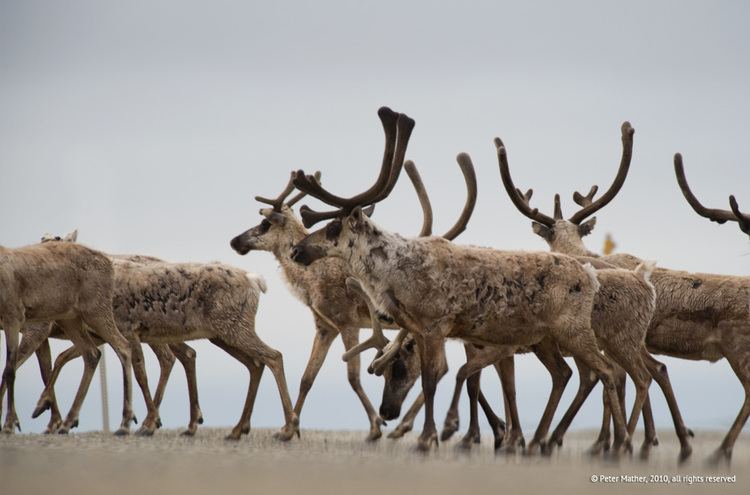 | ||
Similar Reindeer, Barren‑ground caribou, Deer, Mammal, Peary caribou | ||
Porcupine caribou herd vuntut national park
The porcupine caribou or Grant's caribou (Rangifer tarandus granti) is a subspecies of the caribou found in Alaska, United States, and adjacent parts of Canada. It resembles the subspecies, barren-ground caribou (R. t. groenlandicus), and is sometimes included in it.
Contents
- Porcupine caribou herd vuntut national park
- Porcupine caribou herd migration june 2007
- Arctic National Wildlife Refuge
- Ivvavik National Park
- Central Arctic caribou herd
- References
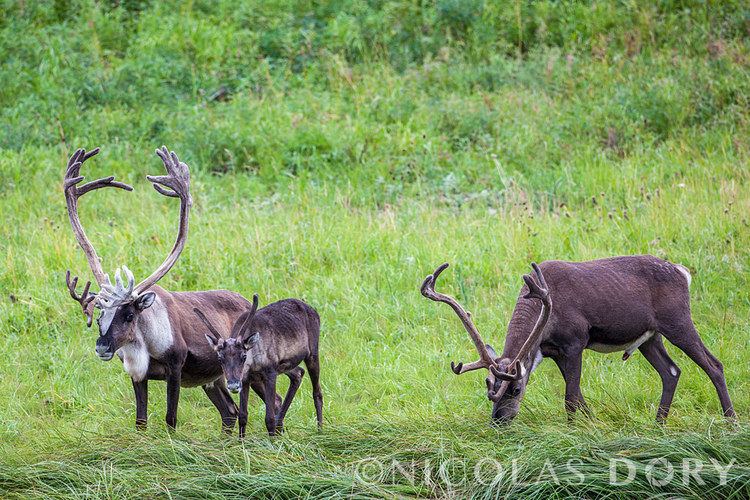
Migratory caribou herds are named after their birthing grounds, in this case the Porcupine River, which runs through a large part of the range of the Porcupine herd. Though numbers fluctuate, the herd comprises approximately 169,000 animals (based on a July 2010 photocensus). They migrate over 1,500 mi (2,400 km) a year between their winter range and calving grounds at the Beaufort Sea, the longest land-migration route of any land mammal on earth. Their range spans the Alaska/Yukon border and is a valued resource cooperatively managed by the Alaska Department of Fish and Game, Canadian wildlife agencies, and local aboriginal peoples. The caribou are the primary sustenance of the Gwichʼin, a First Nations/Alaska Native people, who traditionally built their communities to align with the caribou's migration patterns. They are also routinely hunted by other indigenous peoples, including the Inupiat, Inuvialuit, Hän, and Northern Tutchone.
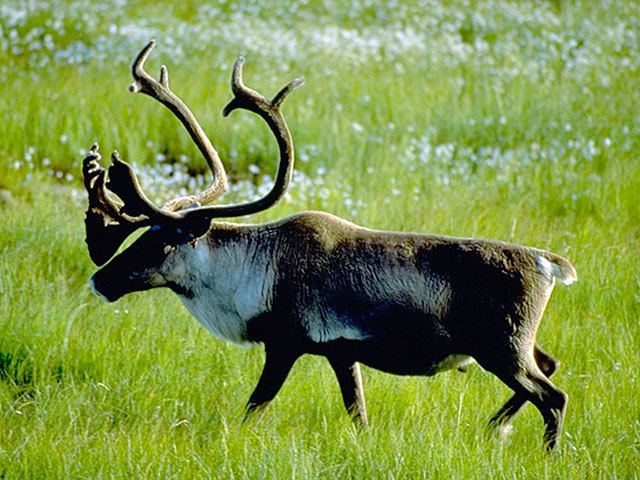
Unlike many other Rangifer tarandus subspecies and their ecotypes, the Porcupine herd is stable at relatively high numbers, but the 2013 photo-census was not counted by January 2014. The peak population in 1989 of 178,000 animals was followed by a decline by 2001 to 123,000. However by 2010, there was a recovery and an increase to 169,000 animals.
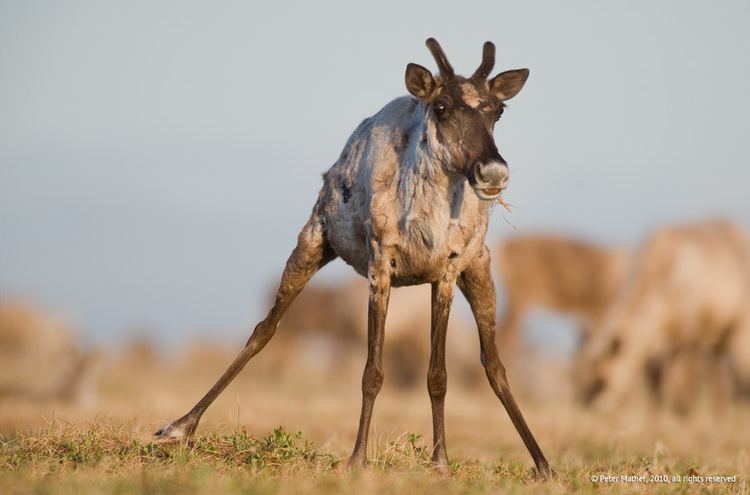
Porcupine caribou herd migration june 2007
Arctic National Wildlife Refuge
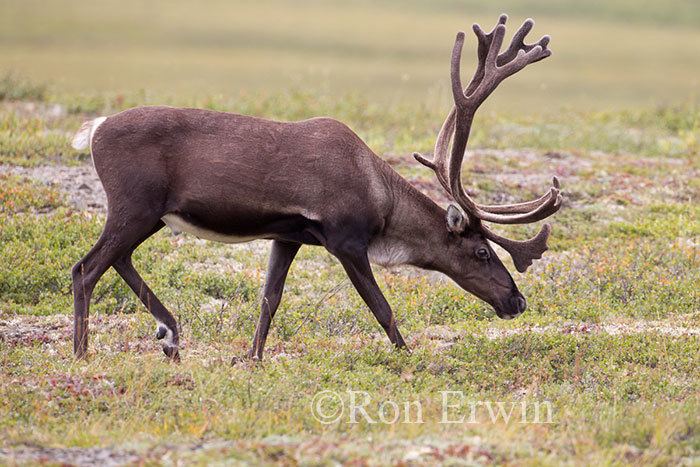
There has been a controversy over disturbance of the Porcupine caribou herd by allowing oil exploration, drilling and development in the Arctic National Wildlife Refuge since 1977. The controversy focused on a 1,500,000 acres (6,100 km2) subsection on the coastal plain, known as the "1002 area". Of particular concern is the effect on the calving ground of the Porcupine caribou.
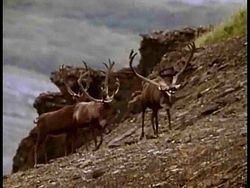
The area for possible future oil drilling on the coastal plains of the Arctic National Wildlife Refuge, encompasses much of the Porcupine caribou calving grounds. Migratory caribou herds are named after their birthing grounds, which in this case is the Porcupine River, running through a large part of the range of the Porcupine herd. In 2001, some biologists feared development in the Refuge would "push caribou into the foothills, where calves would be more prone to predation." Though numbers fluctuate, there were approximately 169,000 animals in the herd in 2010. Their 1,500 miles (2,400 km) annual land migration between their winter range in the boreal forests of Alaska and northwest Canada over the mountains to the coastal plain and their calving grounds on the Beaufort Sea coastal plain, is the longest of any land mammal on earth.
Ivvavik National Park
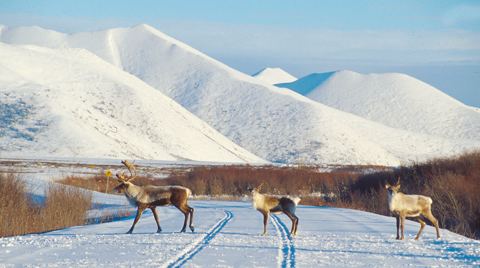
Ivvavik National Park protects a portion of the calving grounds of the Porcupine caribou herd and restricts the number of people who may visit annually. During the calving in May, caribou are at their most vulnerable. Caribou management calls for preservation of calving grounds. Large portions of the calving grounds have been protected in Arctic National Wildlife Refuge in Alaska, United States, and Ivvavik National Park and Vuntut National Park in Canada.
Central Arctic caribou herd
In 2001, proponents of the development of the oil fields at Prudhoe Bay and Kuparuk, which would be approximately 60 miles (97 km) west of the refuge, argued that the Central Arctic caribou herd, had increased its numbers "in spite of several hundred miles of gravel roads and more than a thousand miles of elevated pipe." However, the Central Arctic herd is much smaller than the Porcupine herd and has a range that is much larger.
The 1002 coastal plain provides calving habitat for [the Porcupine herd] nearly five times as large as the central Arctic herd, in an area one-fifth as big. Some biologists fear development here could push caribou into the foothills, where calves would be more prone to predation
